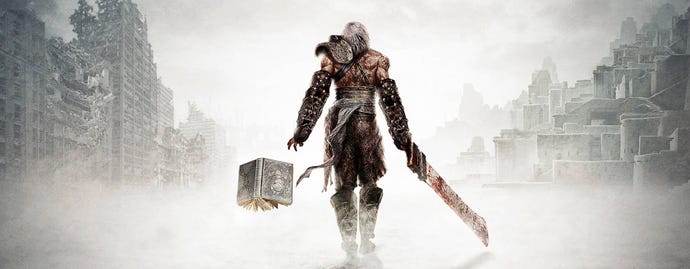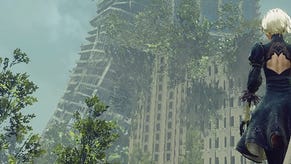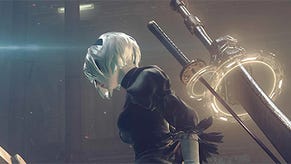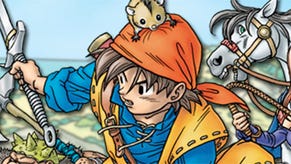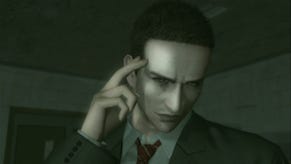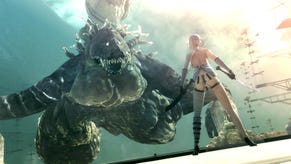Nier: Underappreciated Classic of the Outgoing Generation
On the eve of E3 2014, the first in which we're well and truly "next-gen," Pete looks back on an underappreciated gem from Gen7 and ponders whether we'll ever see its like again.
This article first appeared on USgamer, a partner publication of VG247. Some content, such as this article, has been migrated to VG247 for posterity after USgamer's closure - but it has not been edited or further vetted by the VG247 team.
On this, the eve of E3 2014, the video gaming world hopes -- prays -- for the big hitters of the industry to provide some more compelling reasons to go "next-gen" than have so far arisen. What better time, then, to take a look back on the hardware generation on the way out, and specifically on one of its most criminally underrated games?
There will, of course, be spoilers ahead.
I refer to Nier, a game developed by Cavia as a follow-up to the fifth and final ending of its PS2-era title Drakengard. It's not technically a Drakengard sequel in the strictest sense, since Drakengard itself was directly succeeded by Drakengard 2, also on PS2, and the more recent Drakengard 3 for PS3, which is actually a prequel to everything that's going on. Confused? Understandable; fortunately, Nier stands by itself as its own self-contained story -- the Drakengard connection is just interesting for a bit of narrative context.
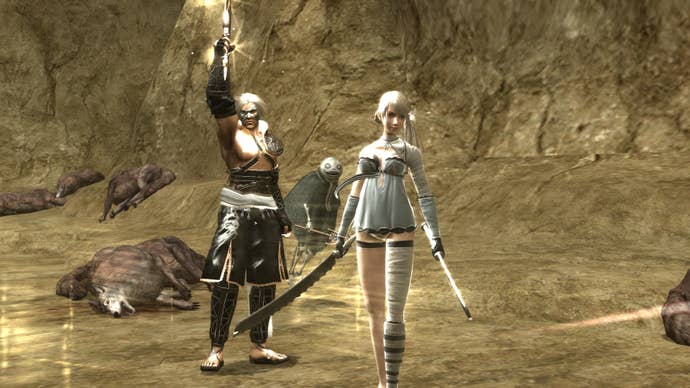
For those as yet unfamiliar with Nier, it casts you in the role of the titular character: a far cry from your typical Japanese role-playing game protagonist, Nier is a middle-aged man and a father to a young girl named Yonah. At least he is in the version we got in the West, which is known as Nier Gestalt in Japan; its companion piece Nier Replicant recasts the protagonist as a teenage boy and Yonah as his sister rather than his daughter. The reasons for this were, according to an interview with Japan's Inside Games site, that it was felt the West would respond better to an older, more mature hero with fatherly responsibilities.
Given that JRPGs are frequently criticized by mainstream Western publications for their respective narratives' overreliance on young teen characters -- particularly in the protagonist role -- it's an understandable change. And it's a welcome one, too; Nier Gestalt's father-daughter story is poignant, touching and somewhat different to the norm; while we've seen a number of "father games" since -- notable examples including Heavy Rain (which actually predated Nier by a few months in 2010) and Telltale's The Walking Dead -- it's still far more common to see video game protagonists, particularly in works of Japanese origin, erring towards the teenage end of the spectrum.
Nier isn't the only interesting character in the cast, either. At various points throughout his adventure to save Yonah from the mysterious disease known as the Black Scrawl, he's accompanied by the foul-mouthed, ill-tempered Kainé, the blind boy Emil, and his near-constant companion, the magical, floating, talking book Grimoire Weiss, played with admirable aplomb by prolific anime and video game voice actor Liam O'Brien. Each of these characters has their own story to tell -- and throughout the game's unusual narrative structure, we get the opportunity to get to know them all in a surprising amount of detail.
The character we discover the most about over the course of the game's four endings is, without a doubt, Kainé. Initially presented as an extremely aggressive, scantily clad woman who appears to be in the game largely to provide a dose of sex appeal, we gradually start to discover that all is not as it initially seems with Kainé. From your second playthrough onwards, you get to explore Kainé's past in much more detail through a surprisingly lengthy text-only sequence, during which it's revealed that she was born intersex and is also partly possessed by a "shade" -- the mysterious shadowy creatures that make up the main antagonistic forces throughout the game. The reveal of these character details is respectful, low-key, well-written and utterly fascinating; I can't recall the last time I felt like I really understood -- or at least empathized with -- a character as much as I did as that sequence drew to a close.
Just to add further complexity to matters, though, from Nier's second playthrough onwards, the player's perspective gains the ability to understand the gibberish that the Shades use when talking to one another -- and the implications are fairly horrific considering you spend most of the game butchering them by the thousand. Needless to say, despite the fact that your second, third and fourth playthroughs of Nier will all be near-identical in terms of gameplay, the additional story context added by this simple but horrifyingly effective change in narrative perspective -- you quietly become a third-person omniscient observer in control of Nier rather than fully inhabiting the role of Nier, since Nier himself is still unable to understand the Shades -- makes for a very different experience, and one which causes you to question the very nature of what it is you're doing as you hack and slash your way through hordes of enemies. How many games can you truly say that about?
Nier isn't just fascinating from a narrative perspective, though. No, its gameplay and presentation also feature some odd, interesting choices. The aforementioned flashback sequence where you explore Kainé's past isn't the only text-only part of the game, for example -- there's a significant chunk in the middle that features a number of imaginative dream sequences represented entirely though evocatively written text. And alongside this, at various points throughout the game, you have sequences where the game's conventional third-person action game perspective changes to top-down Zelda-style, bullet hell-inspired shoot 'em up sequences, side-on platformer, 45-degree Diablo-style isometric perspective and old-school Resident Evil-style fixed camera angles. In every case the change in perspective and, sometimes, play style is surprising, but it never quite feels like it's been put there just for the hell of it; in every case Cavia demonstrates a sound understanding of not only the "look" of these different types of games, but also how they play. The Diablo-style sequence is heavily weighted towards the hack-and-slash side of things, for example, while the Resident Evil-style sequence features lots of exploration and occasional surprises as you creep around an abandoned mansion.

What's interesting about the interplay between gameplay and narrative in Nier is that it frequently subverts expectations -- specifically, the expectation that if you do everything the game tells you to, everything will end up just fine. Sidequests frequently end with some sort of horrible tragedy -- in one memorable instance, you return from attempting to recover a medicinal plant too late to save the person in question and there's nothing you can do about it -- but it's firmly in keeping with the nihilistic tone of the game overall. Reviews of the game upon its original release criticized this aspect of the game in particular, noting that sidequests were repetitive, tedious and often featured little payoff, but an alternative way of looking at it is that the game is encouraging you to "method act" the role of Nier: he's a tired, middle-aged man just trying to do what is right in a dying world and, much as we would like to believe that good deeds are always rewarded, the fact is that sometimes even with the best of intentions things don't turn out quite the way you want them to.
This extends to the game's ending, too. None of the game's four conclusions can be regarded as particularly upbeat in tone, and in the case of the game's fourth and final ending Nier wipes himself from existence so completely and thoroughly that you have to watch, unable to do anything, as the game systematically wipes any trace of your journey from your console's hard drive. To add insult to injury, the game then salts the earth so thoroughly that you're unable to even start a new game with the same filename as your previous runthrough, the only indication that you even played the game at all being any achievements you managed to gather and a slightly different title screen. Now that's a bold statement for a developer to make: "You're done. Move on."
The reason I find Nier so interesting is that it's an immensely creative, ballsy, unconventional title that, as the years pass by and game budgets get ever-larger, is the sort of thing we're starting to see less and less of -- at least in the "full price" space. The indie market is doing lots of cool things, for sure -- and that's probably where we'll see more and more brave, bold games going forward as the packaged games space becomes more and more exclusively the domain of triple-A publishers -- but, thinking back on Nier as I have been doing today, I find myself wondering if I'll ever be able to walk into a store, pick up a boxed PS4 or Xbox One game and discover it to be quite as much of fascinating, risk-taking game as Nier was.
I'd like to think the biz can still support that kind of experience alongside the media oversaturation, hype and, sometimes, inevitable disappointment of big-name games like Assassin's Creed, Call of Duty and Watch Dogs, but it's still early days for Generation 8 as yet; things could go either way right now, and this year's E3 will be pretty telling with regard to the sort of experiences we'll be able to expect from PlayStation 4 and Xbox One in the future.
Here's hoping we have something interesting to look forward to.
